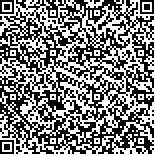下载中心
优秀审稿专家
优秀论文
相关链接
摘要

针对汶川地震导致灾区公路多处中断,提出了利用卫星和航空遥感数据源及已有交通基础数据库,辅助提取公路损毁信息,进行交通应急监测及其信息集成的技术与方法,开展了大量应用实践,获得了重灾区主干公路被损毁的第一手数据;借助遥感空间信息软件平台,将公路损毁监测信息与基础信息集成,实现三维可视化,再现了震后地面交通现状,不仅为抗震救灾指挥部及时提供了地面交通宏观灾情信息,还使应急指挥人员和公众可以感受真实的场景.
8.0-magnitude Wenchuan Quake occurred onMay 12th,2008.The quake hitSichuan, Ganshu, Shanxi and some otherprovinces, which has caused destructive losses inmore than 10 affected counties. The crucialproblem for related governmentdepartments ishow tomitigate the disaster s effects to the casualties and economic losses in the affected areas, and to decrease the dangers caused by the secondarydisasters. Continuous landslides and collapseshave buried roads.Themain roads connected to the outsidewere blocked severely, and threatened by potentialdisasters in the aftershocks. It was difficult to reopen of the lifeline, and to reconstruct for reliefand rescue. Blocked roads became amajor obstacle for the rescue of the disasterareas. Transportation accessmustbe restored as soon aspossible. The mi portantpoint is to know the degree and the spots of the damaged of roads in the first tmi e.Remote sensing technique can be used due to its features ofobjectivity, real-tmi e andmacro-scope view. It can provide a rapid and effective approach formonitoring the secondary disasters, dynamicmonitoring its evolution process, and evaluating the damages. For example, the information about situation of roads, bridges and other road subsidiary infra-structures can be extracted. Formonitoring the disaster damage to transportation airborne remote sensingwas used in the previous studies of 1966 Xingtai Quake, HaichengQuake in 1975, TangshanQuake in 1976 and Lancang-GengmaQuake in 1988 in China. Satellite remote sensing techniquewas used inNantouQuake in 1999 inTaiwan, and JiashiQuake in 2003 in Xinjiang.This paper presents themethod, workflow and results of highway damagemonitoring and assessment for Wenchuan Quake based on remote sensing and its information integration, the workflow, and results.The study area includes the highways in ten counties affected severely by the quake. First, some interpretation keys are summarized for the damaged highway and theirdamaged causes. Next, some damage information extractionmethods are tested, such ashuman-computer interactive interpretation, pixelbased classification (supervised classification and unsupervised classification), and object-orientation segmentation and classification have been tested. Then, the paperpresents the integrationway forbasic information of roadswith disaster information inWebGIS system, named“3Dimension Geographical Information System for the disaster situation ofWenchuan Quake”, realizing the visualization of the disaster situation usingDEM, damage spots and highwaymap in Quake zone. Finally, analyse thewhole situation for themonitoring area. The results reveals thatthere are 63 spots damaged by landslides, 3 spots bymudslides, 190 spots by collapses, 6 spots by quake lakes, 5 spots of bridges broken.According to Beijing-1 mi ages and other sources, Yingxiu-Maoxian section of the national highway, Maoxian-Beichuan section ofProvincialRoad 302,Yingxiu-Wolong section ofProvincialRoad 303, and Anxian-Qingchuan section of ProvincialRoad 105, are seated the in the south-westend ofLongmenshan faultzone, and these roads are parallel toLong menshan hillside fault zone. The damaged roads aremostly consistentwith the fault zone.In conclusion, remote sensing canmonitor and assessment of damage caused by the earthquake, and it can provide the mi portant information to related government departments,and also play amore mi portant role in reconstruction for the decision-makers. Itshould be mi proved and developed in the following aspects: (1)tobuiltthe basic integrated database is needed; (2) to enhance the ability to integratemulti-sourcesdata; (3) to promote the standard for transportation emergency response; (4) to develop information extraction technique for earthquake damage; (5) to develop a united platform for transportation emergency response.

